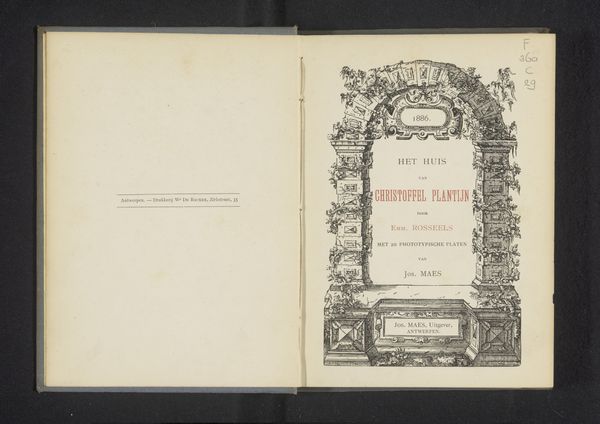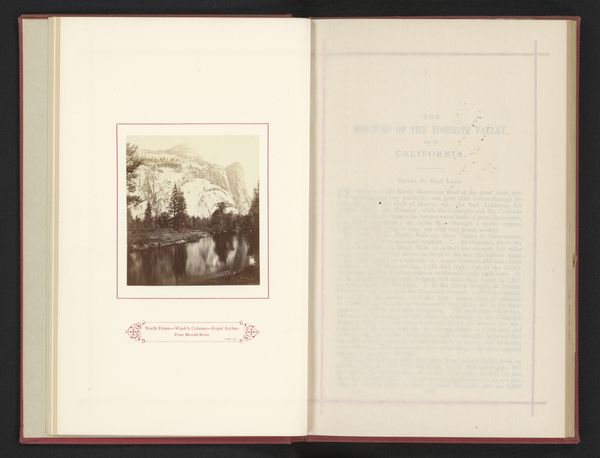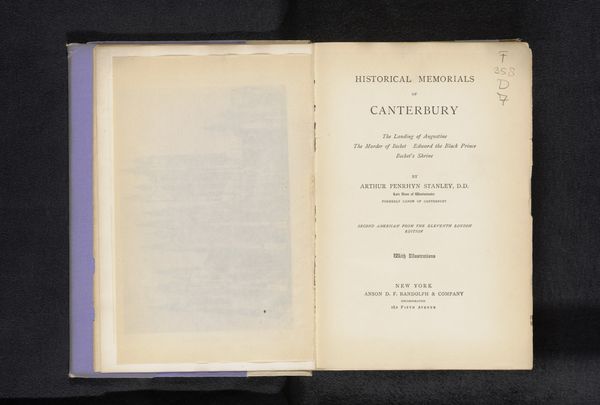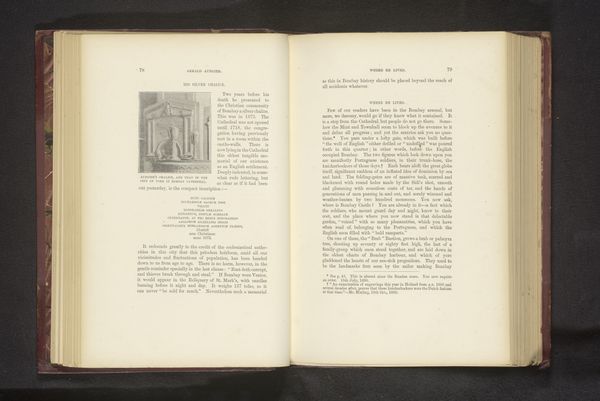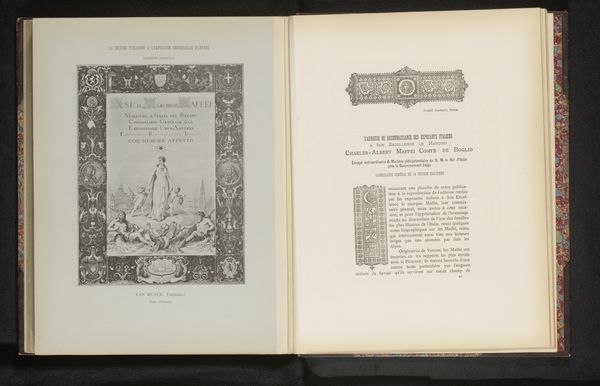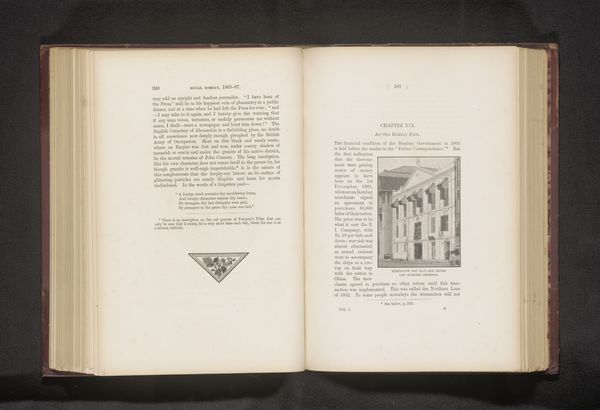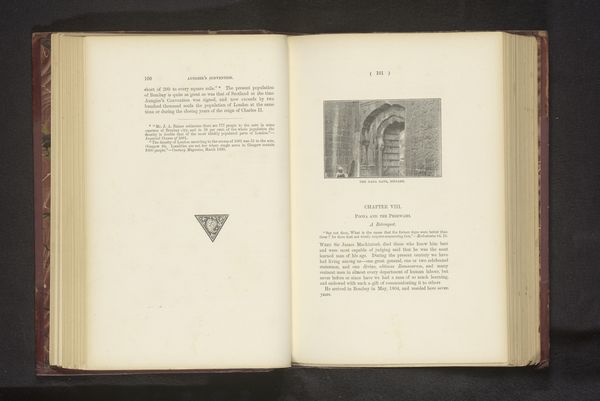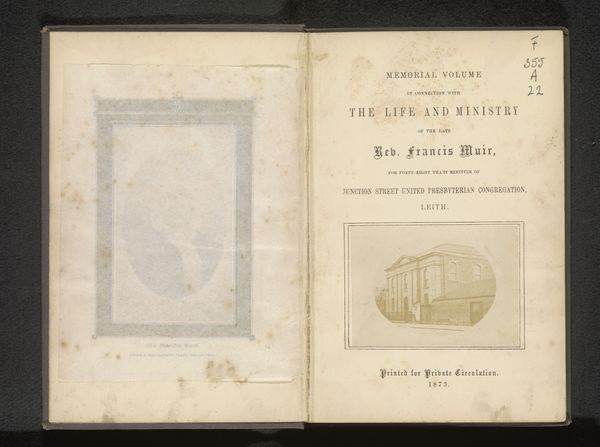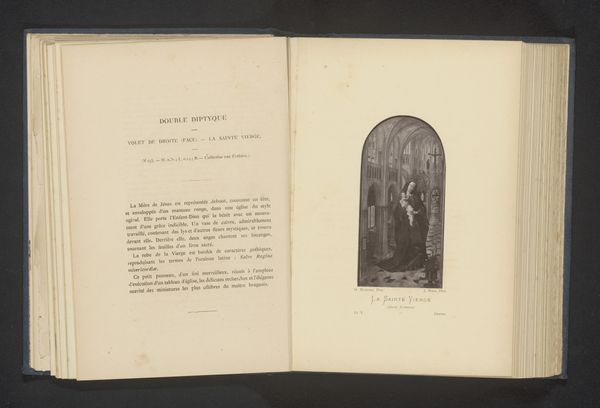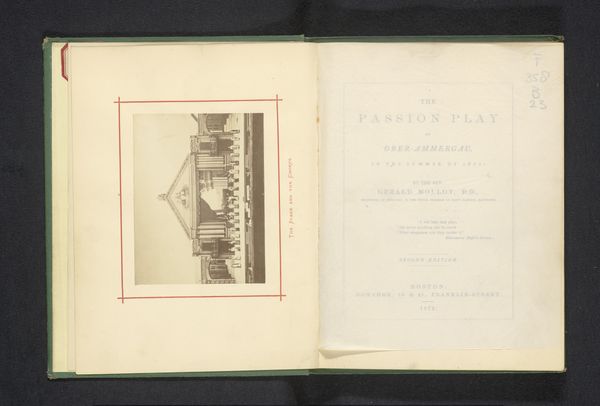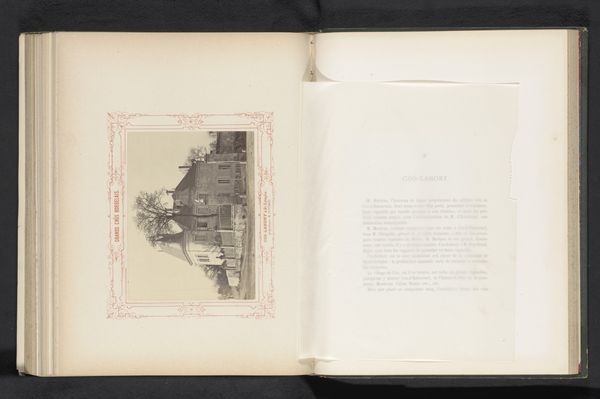
print, photography
# print
#
book
#
photography
#
orientalism
Dimensions: height 225 mm, width 160 mm, thickness 27 mm
Copyright: Rijks Museum: Open Domain
Curator: Let's turn our attention to this open book. It's titled "The Alhambra," authored by Washington Irving, and this particular edition was printed in 1894. It appears to incorporate photography within its design. Editor: It exudes such a nostalgic charm. The typography on the title page and that intricate bordering evoke a sense of a carefully crafted, historical artifact, not just a mass-produced book. There is also another sheet containing an artistic rendering of the actual Alhambra fortress. Curator: Exactly! The blend of the literary with what appears to be photographic printing suggests a desire for authenticity and immersive experience for the reader. Notice the choice of fonts. What sort of impression do they create? And how about the physical object? Think of the paper, the binding, the ink… these choices contribute meaning, right? Editor: Certainly, the gothic typeface gives the work an old-world seriousness and romance and the use of foliage elements for its borders give off a slightly more inviting feeling. Then there is the print depicting the fortress, it shows the 'Entrance to the Mesquita of the Alhambra'. Mesquita suggests 'Mosque' so this photo choice, included in a book about a Spanish-based castle, can only point to a desire by the author to further emphasize the middle-eastern ties and islamic roots in both the castle and Spanish culture as a whole. Curator: It begs the question: how conscious were the printers of their craft in shaping perceptions? For example, the book as an object—the cost of the paper, the intricacy of the border designs—signals its status, addressing a specific audience and class perhaps. Think about how book production reflected and influenced literacy, access to knowledge, even travel trends… Editor: Well, if Irving’s narrative focused on romanticising Spain’s Moorish past, the selection of imagery in the book further emphasizes this by showcasing, as we discussed, clear architectural, cultural and religious elements, giving form to ideas in a visually memorable and impactful way. It uses that symbolic language to create, shall we say, a "picture postcard" of the orient. Curator: It makes me wonder who were the consumers of such Orientalist books, and what desires did owning it fulfill. Also, the labour and the technical printing capabilities available to print, what seems to be, on fairly high quality paper, is an insight into the conditions surrounding publishing processes in that time. Editor: Ultimately, "The Alhambra", both as text and artefact, offers us a chance to reflect on enduring themes, our relationship to the past, to exoticism, to the artistic reproduction, and to our sense of place and belonging. Curator: A fascinating interplay of text, image, and object. Looking closely at these seemingly humble things lets us peek into much larger historical currents and processes of both art and labour, isn’t it?
Comments
No comments
Be the first to comment and join the conversation on the ultimate creative platform.
